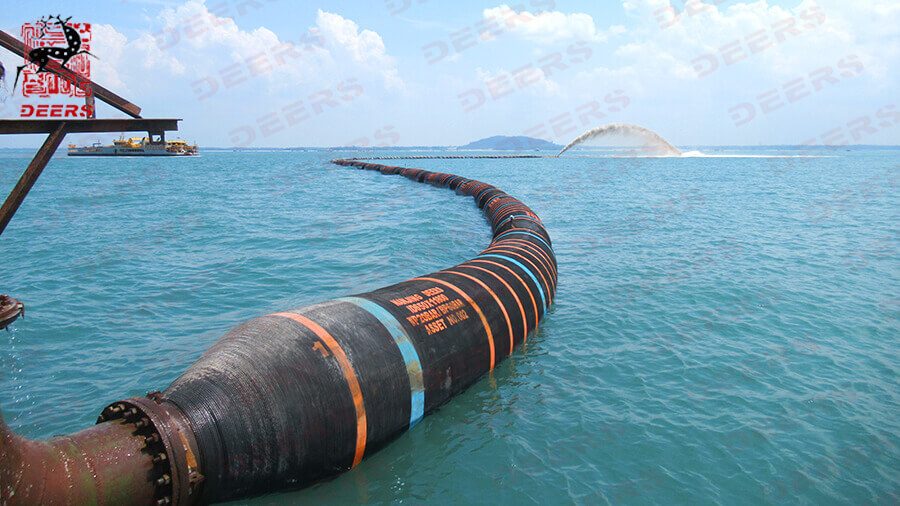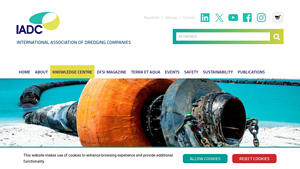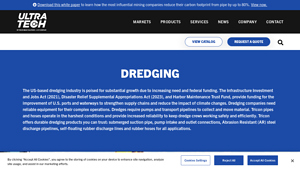Introduction: Navigating the Global Market for dredging pipeline
Navigating the complexities of sourcing dredging pipelines can be daunting for international B2B buyers, especially in regions such as Africa, South America, the Middle East, and Europe. With a myriad of options available, from floating and submerged pipelines to landlines, understanding the unique characteristics and applications of each type is essential. This guide aims to demystify the global market for dredging pipelines, equipping buyers with the knowledge needed to make informed purchasing decisions.
Within these pages, we delve into the various types of dredging pipelines, their applications in diverse industries, and critical insights on supplier vetting processes. Additionally, we explore cost considerations and emerging technologies that impact the efficiency and sustainability of pipeline operations. Each section is designed to address specific challenges faced by buyers, such as ensuring compliance with local regulations and optimizing supply chain logistics.
By providing a comprehensive overview of the dredging pipeline landscape, this guide empowers B2B buyers to navigate their procurement strategies with confidence. Whether you are operating in the bustling markets of Nigeria or the industrial hubs of Germany, this resource will facilitate your journey towards sourcing the right dredging pipeline solutions tailored to your project needs.
جدول المحتويات
- Top 2 Dredging Pipeline Manufacturers & Suppliers List
- Introduction: Navigating the Global Market for dredging pipeline
- Understanding dredging pipeline Types and Variations
- Key Industrial Applications of dredging pipeline
- 3 Common User Pain Points for ‘dredging pipeline’ & Their Solutions
- Strategic Material Selection Guide for dredging pipeline
- In-depth Look: Manufacturing Processes and Quality Assurance for dredging pipeline
- Practical Sourcing Guide: A Step-by-Step Checklist for ‘dredging pipeline’
- Comprehensive Cost and Pricing Analysis for dredging pipeline Sourcing
- Alternatives Analysis: Comparing dredging pipeline With Other Solutions
- Essential Technical Properties and Trade Terminology for dredging pipeline
- Navigating Market Dynamics and Sourcing Trends in the dredging pipeline Sector
- Frequently Asked Questions (FAQs) for B2B Buyers of dredging pipeline
- Strategic Sourcing Conclusion and Outlook for dredging pipeline
- تنويه هام وشروط الاستخدام
Understanding dredging pipeline Types and Variations
| اسم النوع | السمات المميزة الرئيسية | تطبيقات B2B الأولية | موجز الإيجابيات والسلبيات للمشترين |
|---|---|---|---|
| Floating Pipelines | Supported by buoyancy units; modular design; flexible for sea movement | Offshore dredging projects; deep-water mining | الإيجابيات: High flexibility, easy to install and relocate. السلبيات: Vulnerable to extreme weather conditions. |
| Submerged Pipelines | Welded long strings; sunk using water; flanged connections | Underwater construction; pipeline installations | الإيجابيات: Stable and secure; ideal for long distances. السلبيات: Higher installation complexity and cost. |
| Land or Shore Lines | Short, bolted sections; manual/hydraulic valves; adaptable flow | Coastal dredging; sediment transport | الإيجابيات: Easy maintenance; quick to set up. السلبيات: Limited to short distances and requires land access. |
| Booster Stations | Utilizes additional pumps to enhance flow; integrated into pipeline systems | Long-distance slurry transport | الإيجابيات: Increases efficiency; overcomes elevation challenges. السلبيات: Adds complexity and maintenance requirements. |
| Modular Pipeline Systems | Customizable design; can be adapted for various dredging needs | Diverse dredging operations; adaptable projects | الإيجابيات: Versatile and scalable; tailored to specific projects. السلبيات: Potentially higher upfront investment. |
What Are Floating Pipelines and When Should They Be Used?
Floating pipelines are characterized by their buoyancy support, allowing them to navigate the challenges of offshore environments. These pipelines are modular, making them easy to assemble and disassemble, which is particularly beneficial for projects requiring mobility. B2B buyers should consider floating pipelines for offshore dredging and deep-water mining, where flexibility and adaptability are paramount. However, they may face vulnerabilities during extreme weather, necessitating careful risk assessment.
How Do Submerged Pipelines Function and Their Best Applications?
Submerged pipelines are constructed by welding multiple sections into a continuous line, then floated and sunk to the desired position. This design makes them stable for underwater projects, such as pipeline installations and underwater construction. For B2B buyers, submerged pipelines offer reliability over long distances but come with higher installation complexity and costs. It’s essential to evaluate project specifications and budget constraints before opting for this type.
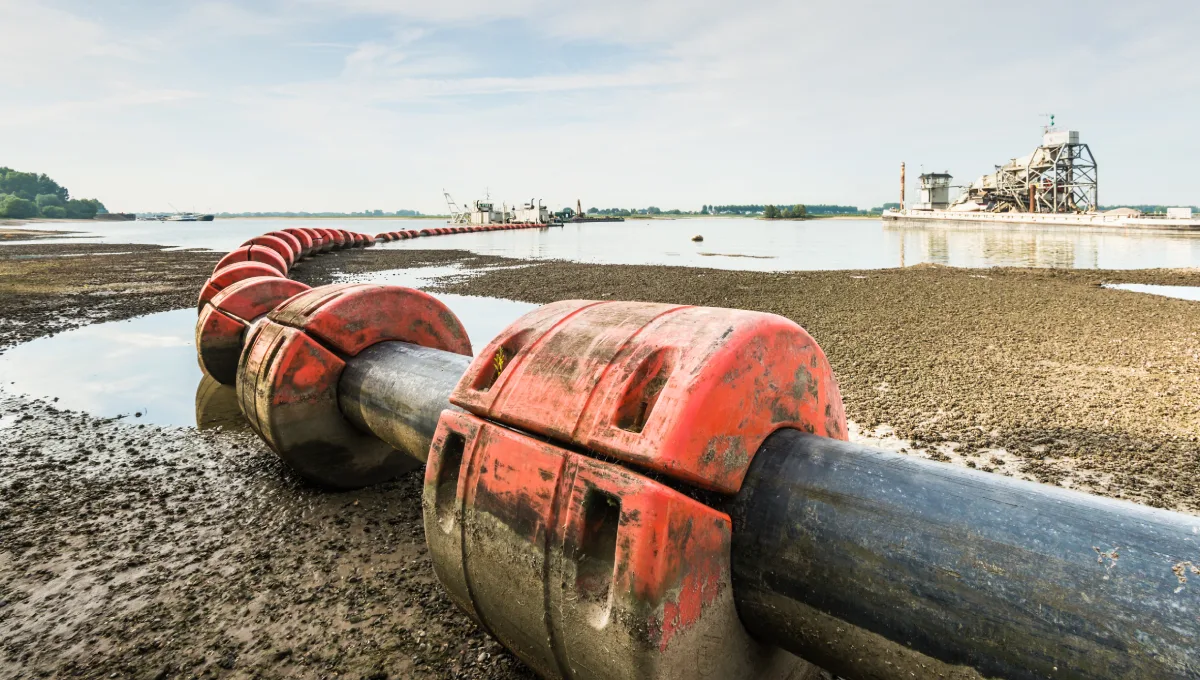
Illustrative image related to dredging pipeline
Why Choose Land or Shore Lines for Dredging Projects?
Land or shore lines consist of shorter, bolted sections that facilitate quick installation and easy maintenance. These pipelines are ideal for coastal dredging and sediment transport applications, where land access is available. B2B buyers may find shore lines advantageous due to their straightforward setup and adaptability. However, their limited reach and dependence on land access may restrict their use in specific projects.
What Role Do Booster Stations Play in Dredging Operations?
Booster stations are crucial in enhancing the flow of materials through pipelines, especially over long distances. By integrating additional pumps, they help overcome elevation challenges and maintain efficiency. Buyers should consider incorporating booster stations for projects requiring extensive slurry transport. While they boost operational efficiency, they also introduce added complexity and maintenance needs, which should be factored into overall project planning.
How Do Modular Pipeline Systems Enhance Dredging Flexibility?
Modular pipeline systems offer a customizable design that can be tailored to various dredging requirements. Their scalability makes them suitable for diverse operations, allowing companies to adapt to changing project demands. B2B buyers should assess the benefits of modular systems for their specific needs, weighing their versatility against the potentially higher initial investment. This option is ideal for companies looking to optimize their dredging capabilities across multiple projects.
Key Industrial Applications of dredging pipeline
| الصناعة/القطاع | Specific Application of dredging pipeline | القيمة/الفائدة للأعمال التجارية | اعتبارات التوريد الرئيسية لهذا التطبيق |
|---|---|---|---|
| Oil & Gas | Installation of underwater pipelines for oil transport | Ensures efficient and safe transportation of hydrocarbons, reducing operational costs | Compliance with international safety standards and environmental regulations |
| Construction & Infrastructure | Dredging for port expansion and land reclamation | Facilitates increased shipping capacity and economic growth in coastal areas | Quality of materials and adaptability to local geological conditions |
| Mining | Transport of mineral slurries from extraction sites to processing plants | Enhances operational efficiency and reduces transportation costs | Durability and resistance to abrasion and corrosion |
| Waste Management | Installation of sewage and wastewater pipelines | Improves public health and environmental safety | Adherence to local regulations and long-term serviceability |
| Renewable Energy | Laying subsea cables for offshore wind farms | Supports the transition to sustainable energy sources | Compatibility with existing marine infrastructure and environmental impact assessments |
How is Dredging Pipeline Used in the Oil & Gas Industry?
In the oil and gas sector, dredging pipelines are essential for the installation of underwater pipelines that transport crude oil and natural gas from offshore drilling sites to onshore processing facilities. These pipelines must be designed to withstand harsh marine environments, including strong currents and corrosive seawater. For international buyers, particularly in regions like Africa and the Middle East, it is crucial to ensure compliance with international safety standards and environmental regulations. This not only mitigates risks but also enhances operational efficiency.
What Role Does Dredging Pipeline Play in Construction & Infrastructure?
Dredging pipelines are vital in construction projects involving port expansions and land reclamation. By facilitating the removal of sediment and the transportation of materials, these pipelines enable the creation of new land and the enhancement of existing port facilities. This directly correlates with increased shipping capacity and economic growth, especially in developing regions like South America and Africa. Buyers should prioritize sourcing high-quality, durable materials that can adapt to local geological conditions to ensure the longevity of their infrastructure projects.
How is Dredging Pipeline Utilized in the Mining Sector?
In mining, dredging pipelines transport mineral slurries from extraction sites to processing plants over long distances. This application significantly enhances operational efficiency by reducing transportation costs and minimizing the need for multiple handling processes. For buyers in regions like Europe, where environmental regulations are stringent, it is important to source pipelines that are resistant to abrasion and corrosion, ensuring they can withstand the harsh conditions often found in mining operations.
What Benefits Do Dredging Pipelines Provide in Waste Management?
Dredging pipelines are crucial for the installation of sewage and wastewater management systems, particularly in urban areas. These pipelines help transport waste materials safely, improving public health and environmental safety. For international buyers, especially in rapidly urbanizing regions, adherence to local regulations and ensuring long-term serviceability are key considerations. Investing in reliable dredging pipeline solutions can lead to enhanced community health and reduced environmental impact.
How Do Dredging Pipelines Support Renewable Energy Initiatives?
In the renewable energy sector, particularly offshore wind farms, dredging pipelines are used to lay subsea cables that connect wind turbines to the grid. This application is essential for supporting the transition to sustainable energy sources and meeting increasing energy demands. Buyers must ensure that the dredging pipeline solutions they source are compatible with existing marine infrastructure and that thorough environmental impact assessments are conducted to minimize ecological disruption.
3 Common User Pain Points for ‘dredging pipeline’ & Their Solutions
Scenario 1: Ensuring Pipeline Flexibility in Varied Marine Conditions
المشكلة B2B buyers often face challenges related to the flexibility and durability of dredging pipelines in dynamic marine environments. For instance, when deploying floating pipelines, the constant movement of water and shifting currents can lead to significant stress on the pipeline structure. This can result in frequent repairs, downtime, and increased operational costs, ultimately affecting project timelines and budgets. Buyers may also struggle with ensuring the right balance between buoyancy and flexibility, which is crucial for maintaining pipeline integrity during dredging operations.
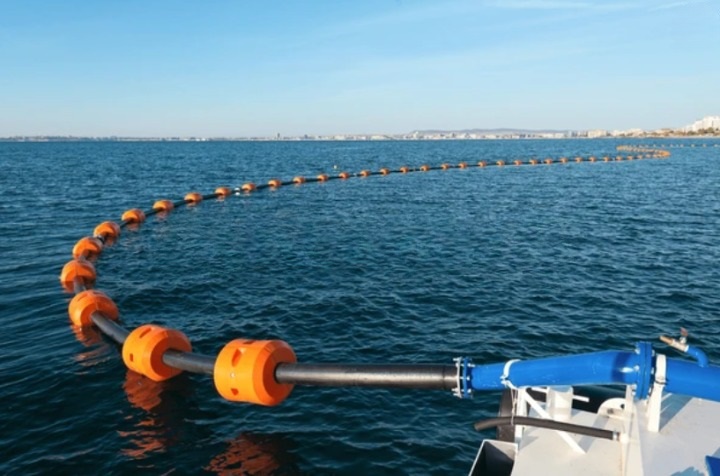
Illustrative image related to dredging pipeline
الحل: To address these challenges, it’s essential to source floating pipelines constructed from flexible materials designed to withstand marine movements. Buyers should consider pipelines with integrated ball joints and flexible pressure hoses, which allow for necessary movement while maintaining structural integrity. When specifying pipelines, ensure that the modular design includes quick coupling devices for efficient assembly and disassembly. Additionally, conduct thorough inspections and regular maintenance to ensure that buoyancy units are functioning correctly, and the pipeline remains in optimal condition. Implementing a monitoring system to track pipeline performance can help predict stress points and schedule timely interventions, ultimately reducing downtime and maintenance costs.
Scenario 2: Overcoming Slurry Transport Inefficiencies
المشكلة Many B2B buyers encounter inefficiencies in the transport of slurry through dredging pipelines, particularly when it comes to maintaining optimal flow rates. Variations in slurry density and viscosity can lead to blockages, increased energy consumption, and even equipment failure. This not only disrupts operations but also increases costs associated with pump maintenance and energy expenditure. Buyers in regions with fluctuating material types, such as sand and silt, may find it particularly challenging to manage these issues effectively.
الحل: To optimize slurry transport, buyers should focus on selecting the appropriate pipeline diameter and material that aligns with the specific characteristics of the slurry being transported. Conducting a comprehensive analysis of the slurry properties can help determine the ideal flow regime and pipeline configuration. Employing advanced technologies such as Computational Fluid Dynamics (CFD) can assist in predicting flow behavior and identifying potential blockages before they occur. Additionally, consider integrating booster stations along the pipeline to maintain pressure and flow consistency, especially over longer distances. Regularly training operational staff on best practices for managing slurry transport can also lead to significant improvements in efficiency and reduced operational disruptions.
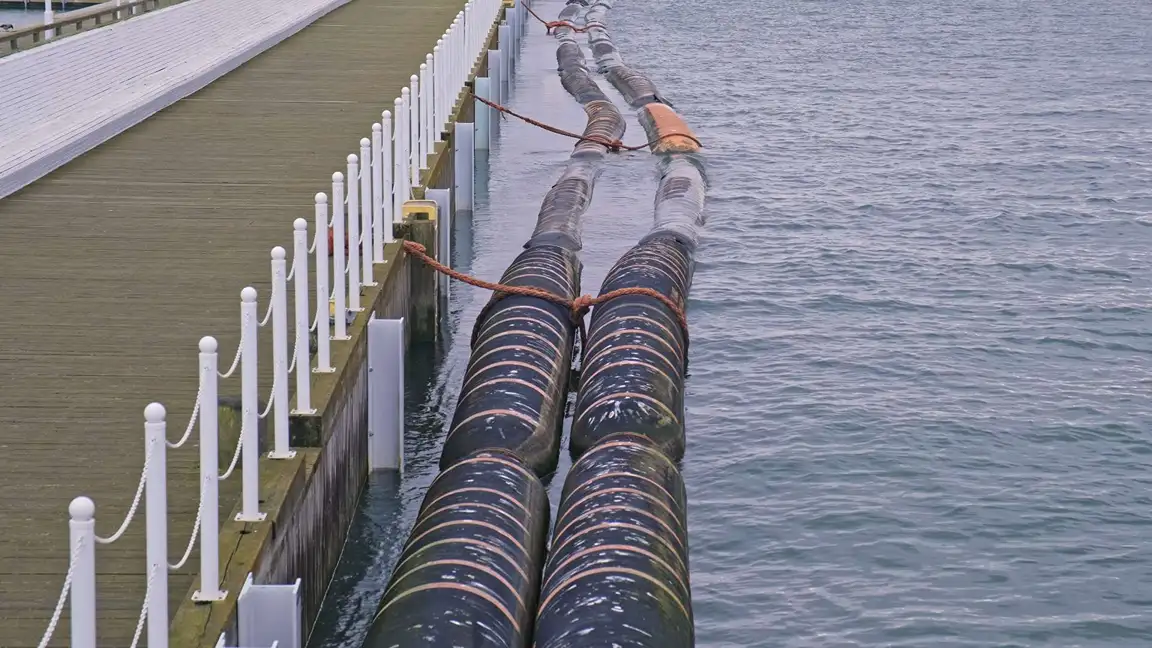
Illustrative image related to dredging pipeline
Scenario 3: Navigating Regulatory Compliance for Pipeline Installations
المشكلة B2B buyers often face the daunting task of ensuring compliance with local and international regulations regarding dredging pipeline installations. This can be particularly challenging in regions with stringent environmental protections or varying compliance standards, such as in parts of Africa and Europe. Non-compliance can lead to costly fines, project delays, and damage to reputation, making it critical for buyers to stay informed and prepared.
الحل: To navigate regulatory compliance effectively, buyers should establish a proactive approach to understanding the legal requirements in their operational areas. This involves engaging with local authorities and environmental agencies early in the project planning phase to ensure all necessary permits are obtained. Additionally, investing in environmental impact assessments can provide valuable insights into potential compliance issues and help in developing strategies to mitigate them. Collaborating with experienced consultants who specialize in dredging and pipeline regulations can further streamline the compliance process. Regular training for staff on compliance best practices and updates on regulatory changes is essential to maintaining adherence throughout the project lifecycle. By embedding compliance into the project’s culture, buyers can minimize risks and enhance their operational credibility.
Strategic Material Selection Guide for dredging pipeline
What Are the Key Properties of Common Materials Used in Dredging Pipelines?
When selecting materials for dredging pipelines, it is essential to consider the unique environmental and operational challenges they will face. The most common materials include steel, high-density polyethylene (HDPE), rubber-lined steel, and fiberglass-reinforced plastic (FRP). Each material has distinct properties that influence its performance in various dredging applications.
How Does Steel Perform in Dredging Applications?
Steel is a traditional choice for dredging pipelines due to its high strength and durability. It typically has excellent temperature and pressure ratings, making it suitable for high-stress environments. Steel pipelines can withstand significant external pressures and are resistant to mechanical wear.
الإيجابيات: Steel pipelines are highly durable and can be manufactured in various thicknesses to suit specific applications. They are also recyclable, which adds to their sustainability profile.
السلبيات: However, steel is prone to corrosion, particularly in marine environments, necessitating protective coatings or cathodic protection systems. This can increase maintenance costs over time.
التأثير على التطبيق: Steel is compatible with a wide range of media, including slurries and chemical mixtures, but its susceptibility to corrosion can limit its use in certain applications without proper treatment.
اعتبارات للمشترين الدوليين: Buyers from regions like Africa and South America should ensure compliance with local standards, such as ASTM or DIN, especially when dealing with corrosive environments.
What Are the Advantages of High-Density Polyethylene (HDPE)?
HDPE is gaining popularity in dredging applications due to its excellent corrosion resistance and flexibility. It is lightweight, which facilitates easier handling and installation.
الإيجابيات: HDPE pipelines are resistant to many chemicals and do not require additional coatings, which can lower overall costs. Their flexibility allows for easier installation in challenging terrains.
السلبيات: While HDPE has good impact resistance, it can be less durable than steel in high-pressure applications. Its temperature rating is also lower than that of steel, which may limit its use in certain environments.
التأثير على التطبيق: HDPE is particularly suitable for transporting abrasive slurries, making it a preferred choice in dredging operations.
اعتبارات للمشترين الدوليين: Compliance with international standards such as ASTM D3350 is crucial for ensuring product quality, especially for buyers in Europe and the Middle East.
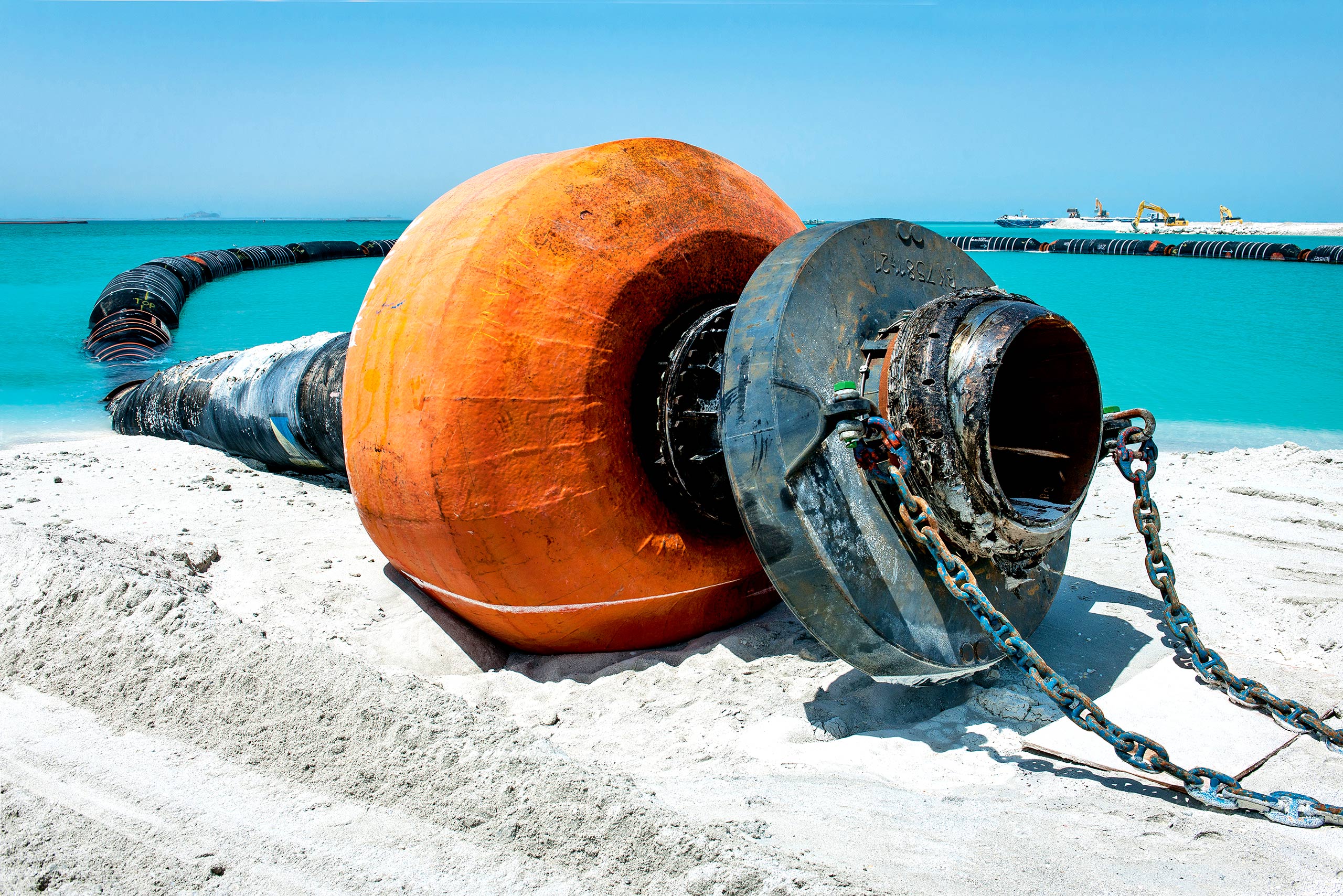
Illustrative image related to dredging pipeline
Why Choose Rubber-Lined Steel for Dredging Pipelines?
Rubber-lined steel combines the strength of steel with the corrosion resistance of rubber, making it an ideal choice for abrasive and corrosive environments.
الإيجابيات: The rubber lining protects the steel from corrosion and wear, significantly extending the life of the pipeline. This hybrid material is suitable for high-pressure applications.
السلبيات: The manufacturing process can be more complex and costly due to the need for specialized lining techniques.
التأثير على التطبيق: Rubber-lined steel is particularly effective for transporting abrasive materials, reducing wear and tear on the pipeline.
اعتبارات للمشترين الدوليين: Buyers must ensure that the rubber lining meets relevant standards, such as JIS or ASTM, to avoid compatibility issues.
What Are the Benefits of Fiberglass-Reinforced Plastic (FRP)?
FRP is a composite material known for its lightweight and corrosion-resistant properties. It is increasingly being used in dredging applications where weight and resistance to harsh environments are critical.
الإيجابيات: FRP is highly resistant to chemical corrosion and does not require additional protective coatings, making it low-maintenance. Its lightweight nature simplifies transportation and installation.
السلبيات: The initial cost of FRP can be higher than that of traditional materials like steel or HDPE. Additionally, it may not be suitable for very high-pressure applications.
التأثير على التطبيق: FRP is ideal for transporting corrosive chemicals and slurries, making it a versatile option for various dredging projects.
اعتبارات للمشترين الدوليين: Compliance with international standards, such as ASTM D638, is essential to ensure the quality and performance of FRP pipelines.
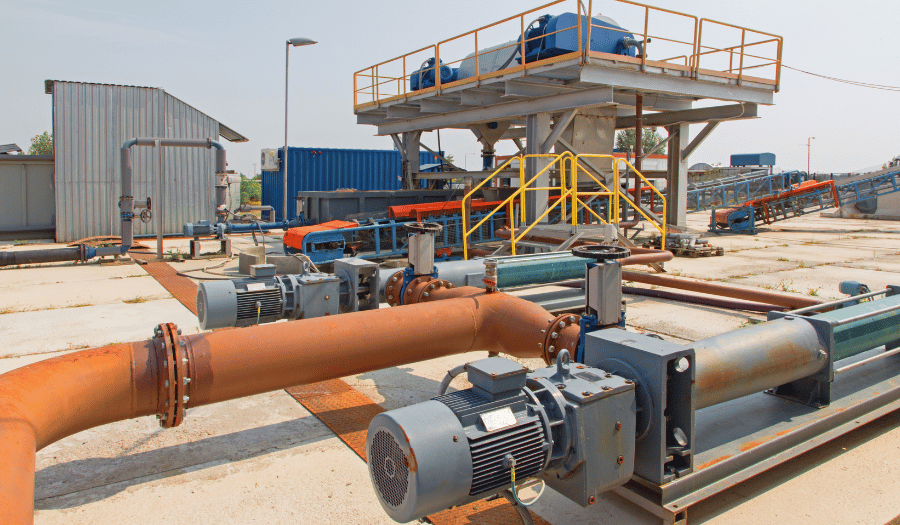
Illustrative image related to dredging pipeline
Summary Table of Material Selection for Dredging Pipelines
| المواد | Typical Use Case for dredging pipeline | الميزة الرئيسية | العيب/التقييد الرئيسي | التكلفة النسبية (منخفضة/متوسطة/مرتفعة) |
|---|---|---|---|---|
| الفولاذ | Heavy-duty applications | قوة ومتانة عالية | Prone to corrosion, requires maintenance | متوسط |
| High-Density Polyethylene (HDPE) | Abrasive slurry transport | Corrosion-resistant and flexible | Lower durability under high pressure | متوسط |
| Rubber-Lined Steel | Abrasive and corrosive environments | Combines strength with wear resistance | Complex manufacturing process | عالية |
| Fiberglass-Reinforced Plastic (FRP) | Chemical and slurry transport | Lightweight and low-maintenance | Higher initial cost, limited pressure use | عالية |
This guide provides a comprehensive overview of the materials available for dredging pipelines, helping international B2B buyers make informed decisions based on their specific needs and regional compliance requirements.
In-depth Look: Manufacturing Processes and Quality Assurance for dredging pipeline
What Are the Key Stages in the Manufacturing Process of Dredging Pipelines?
The manufacturing of dredging pipelines involves several critical stages, each designed to ensure the final product meets the rigorous demands of marine environments. Understanding these stages helps B2B buyers assess potential suppliers effectively.
Material Preparation: What Materials Are Used in Dredging Pipeline Manufacturing?
The first step in the manufacturing process is material selection. Common materials include high-strength steel, which provides durability and resistance to corrosion, and polyethylene, known for its flexibility and buoyancy. The choice of material directly impacts the pipeline’s performance under various environmental conditions.
Once the materials are selected, they undergo preparation, which involves cutting the raw materials into required lengths and shapes. This stage may also include pre-treatment processes such as sandblasting or coating to enhance corrosion resistance and surface finish.
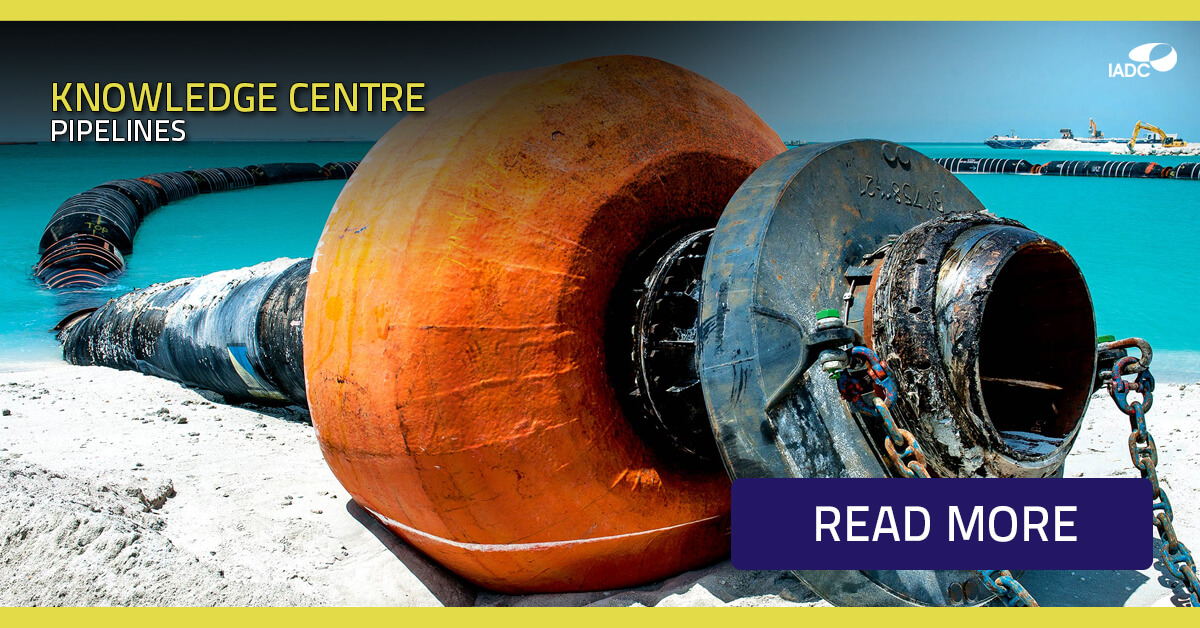
Illustrative image related to dredging pipeline
How Are Dredging Pipelines Formed and Assembled?
Forming is the next stage, where raw materials are shaped into the desired pipe structure. Techniques such as welding, bending, and molding are employed. For submerged pipelines, pipes are typically welded into long strings, which are then floated into position before being submerged. Floating pipelines may involve the integration of buoyancy units or flexible hoses to accommodate marine movements.
The assembly process follows, where the formed pipes are connected using bolts or quick coupling devices. At this stage, flanged connections are also added to facilitate easy integration with other pipeline sections. This modular approach allows for flexibility in pipeline design, catering to specific project needs.
What Finishing Techniques Are Utilized for Dredging Pipelines?
Finishing techniques play a vital role in ensuring the durability and functionality of dredging pipelines. This stage often includes surface treatments such as painting or coating to enhance resistance against marine conditions. Additionally, inspection and testing are conducted to ensure that the pipelines meet the specified quality standards before they leave the manufacturing facility.
What International Standards Govern Quality Assurance in Dredging Pipeline Production?
Quality assurance is paramount in the manufacturing of dredging pipelines, ensuring that they meet international safety and performance standards. Key certifications include:
- آيزو 9001: This international standard focuses on quality management systems and is crucial for manufacturers to demonstrate their commitment to quality.
- علامة CE: Required for products sold within the European Economic Area, indicating compliance with health, safety, and environmental protection standards.
- معايير API: Particularly relevant for pipelines used in oil and gas applications, the American Petroleum Institute (API) provides specifications that ensure reliability and safety.
What Are the Quality Control Checkpoints Throughout the Manufacturing Process?
Quality control (QC) checkpoints are integrated into various stages of the manufacturing process to maintain high standards. These checkpoints typically include:
- مراقبة الجودة الواردة (IQC): At this stage, raw materials and components are inspected for compliance with specifications before they are used in production.
- مراقبة الجودة أثناء المعالجة (IPQC): Ongoing inspections during manufacturing ensure that processes remain within specified limits, allowing for immediate corrective actions if issues arise.
- مراقبة الجودة النهائية (FQC): Once the pipelines are completed, they undergo rigorous testing, including pressure testing and inspection for weld integrity, to confirm they meet the required standards.
Which Testing Methods Are Commonly Used to Ensure Pipeline Integrity?
Several testing methods are employed to verify the quality and integrity of dredging pipelines:
- Hydrostatic Testing: This method involves filling the pipeline with water and pressurizing it to check for leaks and structural integrity.
- Non-Destructive Testing (NDT): Techniques such as ultrasonic testing, radiographic testing, and magnetic particle testing are utilized to detect flaws without damaging the pipeline.
- Visual Inspection: A thorough visual examination is conducted to assess the overall condition of the pipeline, ensuring it meets aesthetic and functional standards.
كيف يمكن للمشترين بين الشركات التحقق من عمليات مراقبة جودة الموردين؟
For B2B buyers, particularly those from diverse regions such as Africa, South America, the Middle East, and Europe, verifying supplier quality control processes is crucial. Here are actionable steps:
-
Request Documentation: Buyers should ask for quality management certifications and detailed QC documentation from suppliers, including inspection reports and test results.
-
Conduct Supplier Audits: On-site audits allow buyers to assess manufacturing facilities, QC processes, and compliance with international standards firsthand.
-
Engage Third-Party Inspectors: Utilizing third-party inspection services can provide an unbiased assessment of the supplier’s quality control measures and product reliability.
What Are the Specific Quality Control Considerations for International Buyers?
International B2B buyers must be aware of specific nuances when it comes to quality control. These include:
-
الامتثال التنظيمي: Understanding local regulations and standards in the buyer’s region is essential for ensuring that the products can be legally imported and used.
-
Cultural and Operational Differences: Recognizing that manufacturing practices may vary by region can help buyers set realistic expectations and communicate effectively with suppliers.
-
Logistical Considerations: Quality assurance does not end at manufacturing; buyers should consider how transportation and handling can affect the integrity of the pipelines during transit.
In conclusion, a thorough understanding of the manufacturing processes and quality assurance measures for dredging pipelines is essential for B2B buyers. By focusing on these aspects, buyers can make informed decisions and establish reliable partnerships with suppliers, ultimately ensuring the success of their dredging projects.
Practical Sourcing Guide: A Step-by-Step Checklist for ‘dredging pipeline’
To assist B2B buyers in procuring dredging pipelines effectively, this guide provides a step-by-step checklist designed to streamline the sourcing process. By following these steps, buyers can ensure that they make informed decisions that align with their project requirements and operational standards.
الخطوة 1: تحديد المواصفات الفنية الخاصة بك
Clearly outline the technical specifications required for your dredging pipeline. This includes determining the type of pipeline (floating, submerged, or shore), material (e.g., steel or buoyant materials), and dimensions necessary for your specific project. Ensuring these specifications are precise helps in communicating effectively with suppliers and ensures that the pipelines meet operational demands.
الخطوة 2: Conduct Market Research
Invest time in researching the market landscape for dredging pipelines. Identify leading manufacturers and suppliers, paying attention to their product offerings, innovations, and regional presence. Understanding market trends and competitors can help you benchmark pricing and quality standards, enabling better negotiation and decision-making.
الخطوة 3: Evaluate Potential Suppliers
Before finalizing a supplier, conduct thorough evaluations to verify their credibility and capabilities. Request company profiles, case studies, and references from other buyers within your industry. Assess their experience with similar projects, particularly in your geographic region, to ensure they understand local challenges and regulations.
- Sub-bullet: Look for suppliers with a proven track record in delivering projects on time and within budget.
- Sub-bullet: Check for any certifications or awards that demonstrate their commitment to quality and safety.
الخطوة 4: Assess Quality Assurance Processes
Investigate the quality assurance protocols that potential suppliers have in place. High-quality pipelines are crucial for the longevity and efficiency of dredging operations. Ask about their manufacturing processes, testing methodologies, and compliance with international standards (such as ISO certifications).
الخطوة 5: Request Samples and Technical Documentation
Request samples of the dredging pipeline and relevant technical documentation before making a purchase. This step is vital for assessing the physical quality and suitability of the materials used. Technical documentation should include installation guidelines, maintenance manuals, and performance specifications.
الخطوة 6: Consider Logistics and Delivery Options
Evaluate the logistics of sourcing and delivering the dredging pipelines. Consider factors such as transportation costs, lead times, and the supplier’s ability to deliver to your project site. Efficient logistics are essential to minimize delays and ensure that your project stays on schedule.
الخطوة 7: Negotiate Terms and Finalize Contracts
Once you have selected a supplier, engage in negotiations to establish favorable terms and conditions. This includes pricing, warranty provisions, payment terms, and after-sales support. Having a clear and detailed contract will protect both parties and help prevent misunderstandings during the procurement process.
By following this checklist, B2B buyers can navigate the complexities of sourcing dredging pipelines with confidence, ensuring they select the right products and suppliers for their specific needs.
Comprehensive Cost and Pricing Analysis for dredging pipeline Sourcing
What Are the Key Cost Components of Dredging Pipeline Sourcing?
When sourcing dredging pipelines, understanding the cost structure is vital for B2B buyers to make informed decisions. The primary cost components include:
-
المواد: The choice of materials significantly impacts pricing. Floating pipelines often utilize high-grade steel or buoyant materials, while submerged lines may require specialized coatings to withstand harsh marine environments. Material costs can vary widely based on market fluctuations and availability.
-
العمالة: Labor costs encompass both skilled and unskilled labor required for manufacturing and installation. The complexity of the pipeline design, such as custom fittings and the need for specialized welding, can increase labor expenses.
-
نفقات التصنيع الزائدة: This includes the costs associated with the production facility, utilities, equipment maintenance, and administrative expenses. Efficient manufacturing processes can help mitigate these costs.
-
الأدوات: The initial investment in tooling, especially for custom designs, can be substantial. However, this cost may be amortized over larger production volumes, impacting the overall pricing strategy.
-
مراقبة الجودة (QC): Rigorous quality assurance processes are crucial for ensuring the durability and performance of dredging pipelines. QC measures add to the cost but are essential for maintaining compliance with industry standards and certifications.
-
الخدمات اللوجستية: The transportation of pipelines to the installation site can incur significant costs, especially for international shipments. Factors such as distance, weight, and the chosen Incoterms can influence logistics pricing.
-
الهامش: Suppliers typically include a profit margin in their pricing, which can vary based on market competition, perceived value, and the uniqueness of the product.
What Influences the Pricing of Dredging Pipelines?
Several factors play a crucial role in determining the price of dredging pipelines:
-
Volume and Minimum Order Quantity (MOQ): Larger orders often qualify for bulk pricing discounts. Negotiating the MOQ can lead to significant savings, especially for ongoing projects.
-
المواصفات والتخصيص: Customized pipelines tailored to specific project requirements may incur additional costs. Buyers should weigh the benefits of customization against their budget constraints.
-
جودة المواد والشهادات: The quality of materials and the presence of certifications (such as ISO or API) can affect pricing. Higher quality often leads to increased costs but can result in lower Total Cost of Ownership (TCO) due to reduced maintenance needs.
-
عوامل الموردين: The reputation and reliability of the supplier can influence pricing. Established suppliers with proven track records may charge a premium, but they often provide better service and assurance of quality.
-
المصطلحات التجارية الدولية: The chosen Incoterms can significantly impact total costs. Understanding whether costs include shipping, insurance, and tariffs is crucial for accurate budget planning.
What Tips Should Buyers Consider for Cost-Efficiency in Dredging Pipeline Procurement?
To maximize cost-efficiency when sourcing dredging pipelines, buyers should consider the following strategies:
-
Negotiate Terms: Engage in discussions with suppliers regarding pricing, payment terms, and delivery schedules. Building a strong relationship can lead to better pricing and terms over time.
-
تقييم التكلفة الإجمالية للملكية (TCO): Consider not just the upfront costs but also the long-term operational costs associated with the pipelines. Investing in higher-quality materials may result in lower maintenance and replacement costs.
-
Understand Pricing Nuances in International Markets: Buyers from regions such as Africa, South America, the Middle East, and Europe should be aware of local market conditions, currency fluctuations, and trade regulations that could affect pricing.
-
Request Multiple Quotes: Obtaining quotes from multiple suppliers can provide a clearer picture of the market and help identify competitive pricing.
Disclaimer
Prices for dredging pipelines can vary significantly based on the above factors. The information provided here is intended for general guidance and should not be considered a definitive pricing structure. Always consult with suppliers for the most accurate and current pricing tailored to specific project requirements.
Alternatives Analysis: Comparing dredging pipeline With Other Solutions
Exploring Alternative Solutions to Dredging Pipelines: Key Comparisons
In the realm of dredging and sediment transport, various technologies exist that can serve as alternatives to traditional dredging pipelines. Understanding the strengths and weaknesses of these alternatives is crucial for B2B buyers looking to optimize their project outcomes. This analysis compares dredging pipelines with two viable alternatives: Hydraulic Dredging Systems and Mechanical Dredging Methods.
| جانب المقارنة | Dredging Pipeline | Hydraulic Dredging Systems | Mechanical Dredging Methods |
|---|---|---|---|
| الأداء | High efficiency in transporting slurry over long distances. | Excellent for deep water applications, capable of handling diverse materials. | Effective for localized dredging, particularly in shallow waters. |
| التكلفة | Moderate initial setup cost, but can incur high operational costs due to energy consumption. | Often lower operational costs but can require significant upfront investment in equipment. | Generally lower initial costs but may involve higher labor costs for operation. |
| سهولة التنفيذ | Requires careful planning and installation, which can be time-consuming. | Quick setup, especially for floating systems, but may require specialized knowledge for operation. | Straightforward implementation, especially for smaller projects, but can be labor-intensive. |
| الصيانة | Regular maintenance needed to prevent wear and tear, especially in high-flow conditions. | Lower maintenance frequency but requires skilled personnel for repairs and adjustments. | High maintenance due to mechanical wear and tear; regular inspections are essential. |
| أفضل حالة استخدام | Ideal for large-scale projects needing continuous material transport over long distances. | Best suited for underwater dredging where material variety and depth are challenges. | Effective for small-scale or localized dredging tasks, especially in urban or constrained environments. |
What Are the Advantages and Disadvantages of Hydraulic Dredging Systems?
Hydraulic dredging systems utilize high-pressure water jets to mobilize and transport sediments. One of the primary advantages is their efficiency in deeper waters, allowing for the dredging of diverse materials without significant alterations to the seabed. However, they often require substantial initial investments in specialized equipment, which may not be feasible for smaller projects. Additionally, operational expertise is crucial to optimize performance and safety.
What Are the Pros and Cons of Mechanical Dredging Methods?
Mechanical dredging methods involve the use of equipment like clamshells or bucket dredgers to physically remove sediment. These methods are typically easier to implement and can be less costly upfront. They are particularly useful for smaller projects in shallow waters or areas with significant existing infrastructure. However, they often come with higher ongoing labor costs and may not be as efficient for transporting materials over long distances, limiting their applicability in larger-scale operations.
How to Choose the Right Dredging Solution for Your Needs?
When considering dredging solutions, B2B buyers should evaluate the specific requirements of their projects, including the scale, location, and material types involved. Dredging pipelines are optimal for extensive operations needing consistent material flow, while hydraulic systems offer flexibility in challenging underwater conditions. In contrast, mechanical methods may be best for localized tasks with budget constraints. By assessing these factors, buyers can select the most effective solution tailored to their operational needs and financial considerations.
Essential Technical Properties and Trade Terminology for dredging pipeline
What Are the Key Technical Properties of Dredging Pipelines?
Understanding the essential specifications of dredging pipelines is crucial for B2B buyers involved in procurement, project management, and operational planning. Here are several critical technical properties that should be considered:
-
Material Grade
– Dredging pipelines are typically constructed from high-strength materials such as steel or polyethylene (HDPE). The material grade determines the pipeline’s durability, resistance to corrosion, and ability to withstand high-pressure environments. Choosing the appropriate material grade ensures longevity and reliability, minimizing the risk of costly repairs or replacements. -
Tolerance and Dimensional Specifications
– Tolerance refers to the allowable variation in the dimensions of the pipeline. This specification is vital for ensuring proper connections and fittings during installation. Tight tolerances are particularly important in submerged pipelines to maintain hydraulic efficiency and prevent leaks. Understanding these specifications helps buyers select compatible components and maintain operational integrity. -
Pressure Rating
– The pressure rating indicates the maximum internal pressure the pipeline can safely withstand. This property is critical in determining the pipeline’s suitability for specific applications, such as transporting slurry or dredged materials. Buyers must assess the operational conditions to ensure the selected pipeline can handle the expected pressures without failure. -
Flexibility and Bend Radius
– Flexibility is an essential property, particularly for floating pipelines. The ability to bend without breaking allows the pipeline to adapt to environmental factors like waves and currents. The minimum bend radius is a key specification that buyers should consider to ensure the pipeline can be installed and operated effectively without compromising its structural integrity. -
Joint Types and Connection Methods
– Various joint types, such as flanged connections or ball joints, are used to connect sections of dredging pipelines. The choice of connection method affects the ease of assembly and disassembly, maintenance, and overall system reliability. Understanding these options allows buyers to select the most suitable and efficient connection type for their projects.
What Common Trade Terms Should B2B Buyers Know in the Dredging Pipeline Industry?
Familiarity with industry jargon is vital for effective communication and negotiation. Here are some common trade terms relevant to dredging pipelines:
-
OEM (Original Equipment Manufacturer)
– An OEM is a company that produces parts or equipment that may be marketed by another manufacturer. In the context of dredging pipelines, knowing the OEM can help buyers ensure they are sourcing quality components from reputable manufacturers, which is crucial for project success. -
MOQ (Minimum Order Quantity)
– MOQ refers to the smallest quantity of a product that a supplier is willing to sell. Understanding MOQs is essential for buyers as it impacts budgeting and inventory management. This term often influences procurement strategies, especially in large-scale projects. -
RFQ (Request for Quotation)
– An RFQ is a formal document requesting pricing and terms from suppliers for specific products or services. Buyers in the dredging pipeline sector should utilize RFQs to gather competitive quotes, ensuring they make informed decisions based on cost and supplier capabilities. -
Incoterms (International Commercial Terms)
– Incoterms are internationally recognized rules that define the responsibilities of buyers and sellers in international transactions. Familiarity with these terms helps buyers understand shipping obligations, insurance, and risk management, which are crucial when dealing with cross-border procurement. -
Lead Time
– Lead time refers to the time taken from placing an order to the delivery of goods. In dredging projects, where timelines can be tight, understanding lead times helps buyers plan effectively and avoid delays that could impact project completion. -
Slurry Transport Regime
– This term refers to the method used to transport a mixture of solids and liquids through pipelines. Selecting the appropriate slurry transport regime is crucial for optimizing flow and efficiency in dredging operations, influencing both operational costs and project timelines.
By grasping these technical properties and trade terminologies, B2B buyers can make more informed decisions, leading to successful procurement and project execution in the complex field of dredging pipelines.
Navigating Market Dynamics and Sourcing Trends in the dredging pipeline Sector
What Are the Current Market Dynamics and Key Trends Influencing the Dredging Pipeline Sector?
The global dredging pipeline market is witnessing significant transformation driven by several key factors. Increased demand for infrastructure development, particularly in emerging economies across Africa and South America, is propelling growth in dredging activities. These regions are investing heavily in port expansions, flood management systems, and land reclamation projects, which necessitate sophisticated dredging pipeline solutions. Additionally, technological advancements in materials and designs, such as the development of floating and submerged pipelines, are enhancing operational efficiency and reducing costs.
B2B buyers are increasingly focusing on modular designs that allow for flexibility and rapid deployment. Innovations like quick coupling devices and flexible pressure hoses are becoming standard, enabling faster assembly and disassembly of pipelines on-site. Moreover, the integration of digital technologies, including IoT and AI, is streamlining operations, allowing for real-time monitoring and predictive maintenance, thus reducing downtime and enhancing productivity.
Emerging trends also indicate a growing preference for eco-friendly materials and practices in pipeline manufacturing and installation. Buyers from Europe, particularly Germany, are pushing for compliance with stringent environmental regulations, leading suppliers to adopt more sustainable practices. The ability to provide advanced, environmentally conscious solutions is becoming a competitive differentiator in the global market.
How Is Sustainability and Ethical Sourcing Shaping the Dredging Pipeline Industry?
As global awareness of environmental issues rises, sustainability and ethical sourcing are becoming paramount in the dredging pipeline sector. The environmental impact of dredging operations, including habitat disruption and sediment displacement, necessitates a commitment to sustainable practices. International B2B buyers are increasingly prioritizing suppliers who demonstrate responsible sourcing of materials and environmentally friendly manufacturing processes.
Utilizing ‘green’ certifications and materials, such as recycled polymers or sustainably sourced metals, is gaining traction among industry players. Suppliers that can provide evidence of their commitment to reducing carbon footprints and waste production are more likely to attract international buyers looking to align with sustainable initiatives. Furthermore, the adoption of innovative technologies, such as energy-efficient pumps and low-impact dredging methods, is crucial for minimizing environmental impact.
Establishing ethical supply chains is also critical. Buyers are scrutinizing their suppliers’ practices to ensure compliance with labor standards and ethical sourcing of raw materials. Transparency in sourcing and manufacturing processes not only builds trust but also enhances brand reputation in an increasingly competitive marketplace.
How Has the Dredging Pipeline Sector Evolved Over Time?
The dredging pipeline sector has undergone significant evolution, driven by technological advancements and changing market demands. Historically, dredging operations relied heavily on basic pipeline systems, which were limited in flexibility and efficiency. The introduction of floating and submerged pipeline technologies revolutionized the industry, allowing for more complex and expansive dredging projects.
Over the years, the focus has shifted towards enhancing operational efficiency and minimizing environmental impact. Innovations in pipeline materials, such as the use of high-density polyethylene (HDPE) and modular designs, have improved durability and adaptability to various marine conditions. This evolution has positioned the dredging pipeline sector as a vital component in infrastructure development across various regions, with a strong emphasis on sustainability and ethical practices shaping its future trajectory.
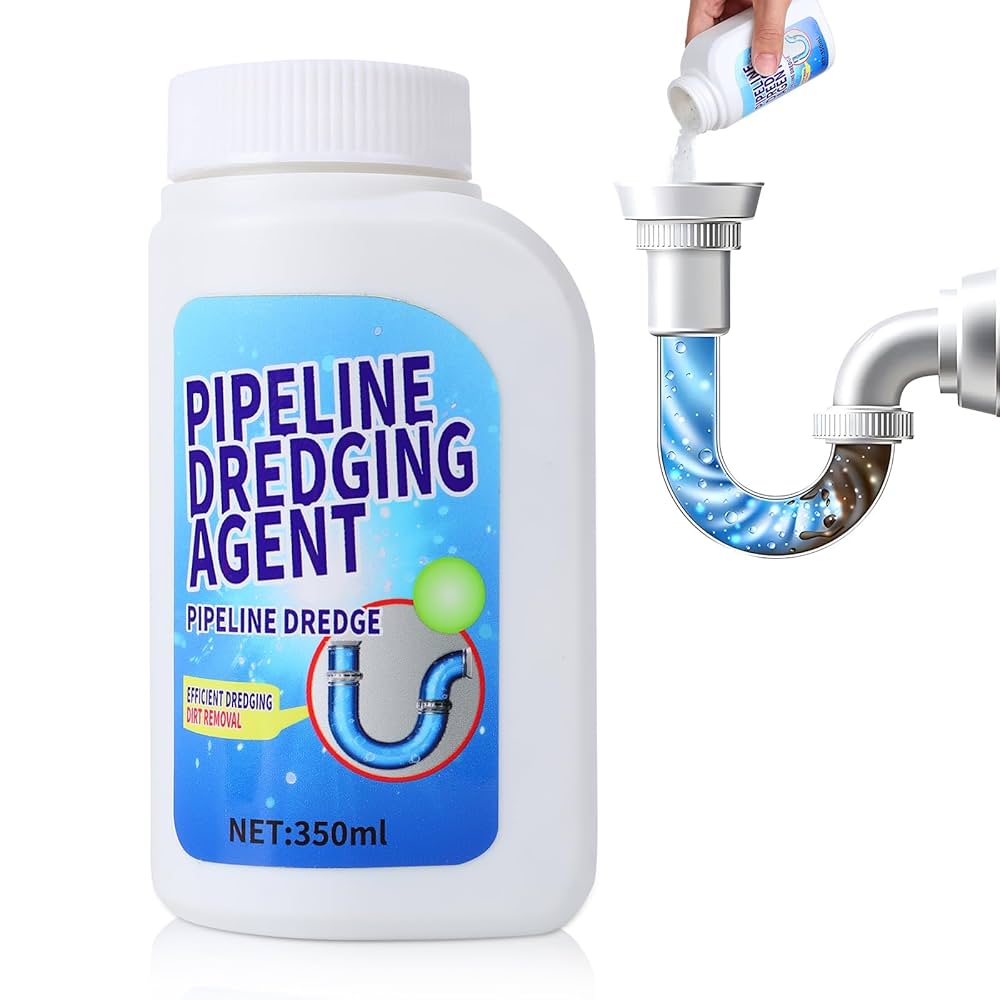
Illustrative image related to dredging pipeline
In summary, the dredging pipeline market is not just about fulfilling operational needs; it is also about adapting to global trends in sustainability, technology, and ethical sourcing, which are critical for B2B buyers navigating this dynamic landscape.
Frequently Asked Questions (FAQs) for B2B Buyers of dredging pipeline
-
How do I select the right type of dredging pipeline for my project?
Selecting the appropriate dredging pipeline depends on various factors, including project requirements, the type of materials being transported, and environmental conditions. For instance, floating pipelines are ideal for deep-water applications, while submerged pipelines are suited for stable seabed conditions. Consider the flexibility needed to withstand currents and waves, as well as the installation complexity. Engaging with a knowledgeable supplier can provide insights into the best materials and configurations for your specific needs. -
What are the key considerations when vetting suppliers of dredging pipelines?
When vetting suppliers, focus on their industry experience, product quality, and reputation. Look for certifications or standards compliance that align with international regulations. Request references from past clients to assess their reliability and customer service. Evaluate their capacity for customization, understanding of your local market, and ability to provide after-sales support. A supplier with a strong track record in similar projects can significantly reduce risks associated with procurement. -
What customization options are available for dredging pipelines?
Customization options for dredging pipelines can include variations in diameter, material type (such as HDPE or steel), and flexibility features like ball joints or pressure hoses. Additionally, suppliers may offer tailored solutions for specific environmental conditions or operational requirements. Discuss your project needs with potential suppliers to explore available options that enhance performance and longevity, ensuring the pipeline is fit for purpose. -
What is the minimum order quantity (MOQ) for dredging pipelines?
The minimum order quantity (MOQ) for dredging pipelines varies by supplier and can depend on the type of pipeline and customization requirements. Generally, suppliers may have higher MOQs for specialized or customized products, while standard pipelines may have lower MOQs. It’s advisable to communicate your project scale and specific needs to negotiate favorable terms and potentially explore bulk purchase discounts. -
What payment terms should I expect when sourcing dredging pipelines internationally?
Payment terms for international procurement of dredging pipelines can vary widely. Common arrangements include letters of credit, advance payments, or payment upon delivery. Suppliers may require a deposit, particularly for customized orders. It’s crucial to clarify payment terms early in negotiations and ensure they align with your cash flow management. Understanding the currency exchange implications is also vital, especially when dealing with international transactions. -
How can I ensure the quality of dredging pipelines before purchasing?
To ensure quality, request detailed specifications and certifications from suppliers that confirm compliance with international standards. Consider asking for samples or conducting a factory inspection to assess manufacturing practices. Quality assurance processes, including testing for durability and pressure resistance, should be standard. Engaging a third-party inspection service can also provide an unbiased assessment of the product before finalizing your purchase. -
What logistics considerations should I keep in mind when sourcing dredging pipelines?
Logistics play a critical role in the timely delivery of dredging pipelines. Consider factors such as shipping methods, potential customs duties, and transport times, which may vary based on the origin and destination. It’s advisable to discuss logistics with your supplier to understand their capabilities in handling international shipping. Ensuring clear communication regarding delivery timelines and responsibilities will help avoid delays that can impact project schedules. -
What are the environmental considerations for using dredging pipelines?
When using dredging pipelines, it’s essential to consider environmental regulations and impacts. Ensure that the materials used are compliant with local environmental standards to minimize ecological disruption. Additionally, assess the potential for sediment displacement and water quality impacts during pipeline installation and operation. Collaborating with environmental consultants and adhering to best practices can mitigate negative effects and enhance project sustainability.
Top 2 Dredging Pipeline Manufacturers & Suppliers List
1. IADC Dredging – Floating Pipelines
المجال: iadc-dredging.com
مسجل: 1998 (27 سنة)
مقدمة: تنقسم خطوط الأنابيب إلى ثلاث فئات رئيسية: خطوط الأنابيب العائمة، والخطوط المغمورة أو "الغاطسة"، والخطوط البرية أو "الشاطئية".
1. **Floating Pipelines**:
– Formed of steel pipes supported by buoyancy units or surrounded by a buoyant case.
– Composed of pipes made of a buoyant material.
- يجب أن تكون مرنة لتحمل حركة البحر والتيارات البحرية.
– Flexibility achieved through ball joints or f…
2. Ultra Tech – Pipe Bends & Fittings
المجال: ultratechpipe.com
Registered: 2007 (18 years)
مقدمة: Ultra Tech 600 Pipe Bends & Fittings, Threaded Pipe, Extended Life Elbow, Ultra Tech 200 Connections, Valves, Hose, Shotcrete, Abrasion Resistant (AR) steel discharge pipelines, submerged suction pipe, pump intake and outlet connections, self-floating rubber discharge lines, reinforced abrasion-resistant hoses.
Strategic Sourcing Conclusion and Outlook for dredging pipeline
In navigating the complexities of dredging pipeline procurement, international B2B buyers must prioritize strategic sourcing to enhance operational efficiency and reduce costs. Understanding the various types of pipelines—floating, submerged, and land—enables organizations to make informed decisions tailored to specific project requirements. Emphasizing the importance of flexibility in pipeline design, as well as the integration of advanced technologies and safety measures, can significantly improve project outcomes.
Additionally, fostering strong supplier relationships and leveraging global best practices can lead to innovative solutions that address unique challenges in diverse markets, from Nigeria to Germany. Engaging with suppliers who prioritize sustainability and compliance with local regulations will not only mitigate risks but also enhance corporate reputation.
As the dredging industry continues to evolve, buyers should remain proactive in exploring new technologies and methodologies that can streamline operations. By embracing a forward-thinking approach and prioritizing strategic sourcing, businesses can position themselves for success in an increasingly competitive landscape. Now is the time to assess your procurement strategies and collaborate with trusted partners to drive efficiency and innovation in your dredging pipeline projects.
تنويه هام وشروط الاستخدام
⚠️ إخلاء مسؤولية مهم ⚠️
المعلومات الواردة في هذا الدليل، بما في ذلك المحتوى المتعلق بالمصنعين والمواصفات الفنية وتحليل السوق، هي لأغراض إعلامية وتعليمية فقط. وهي لا تشكل مشورة مهنية في مجال المشتريات أو مشورة مالية أو مشورة قانونية.
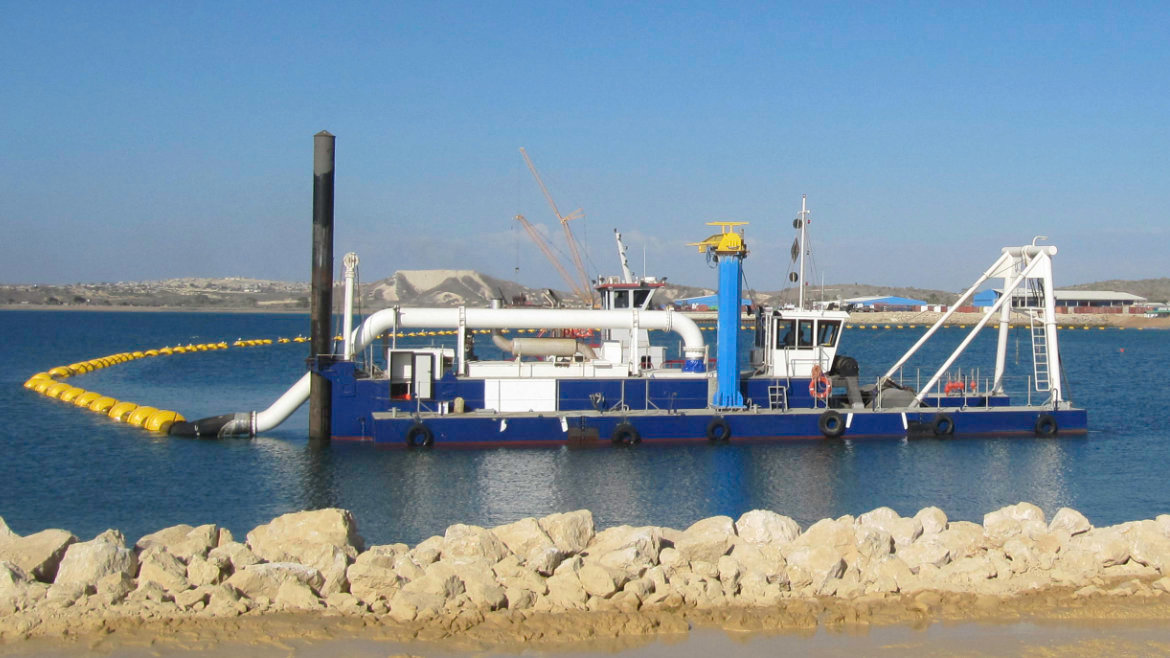
Illustrative image related to dredging pipeline
على الرغم من أننا بذلنا كل جهد ممكن لضمان دقة المعلومات ودقة توقيتها، إلا أننا لسنا مسؤولين عن أي أخطاء أو سهو أو معلومات قديمة. تخضع ظروف السوق وتفاصيل الشركة والمعايير الفنية للتغيير.
يجب على المشترين بين الشركات إجراء العناية الواجبة المستقلة والشاملة الخاصة بهم قبل اتخاذ أي قرارات شراء. ويشمل ذلك الاتصال بالموردين مباشرة، والتحقق من الشهادات، وطلب عينات، وطلب الاستشارات المهنية. يتحمل القارئ وحده مخاطر الاعتماد على أي معلومات واردة في هذا الدليل.

